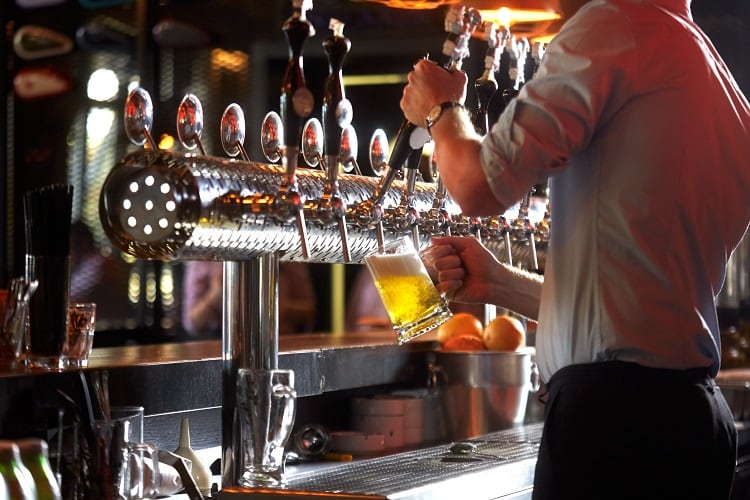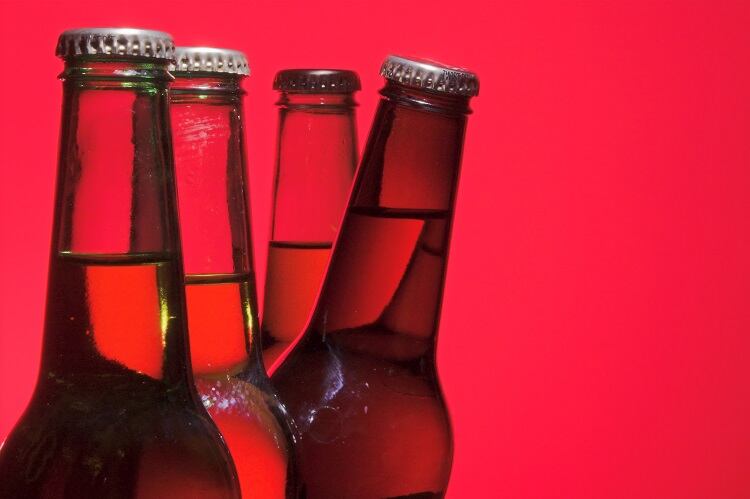Low and no alcohol is on the rise, and with it non-alcoholic beer sales are growing significantly. According to consumer behaviour analytics company Circana, sales of non-alcoholic beer in the UK made up 1.5% of beer sales in January 2020 (Circana All Outlets Beer Volume sales L52W to Jan 4 2020 ) and 2.7% in December 2023 (Circana All Outlets Beer Volume sales L52W to Dec 30 2023 ).
“There is a demand that never was there before,” Alex Lund, director of trade marketing at Asahi UK, said on a panel at an event last month hosted by Lightspeed. “It’s a generational thing and it’s a cultural thing,” added Scot Turner, founder and managing director of Auden Hospitality, also at the event.
With a range of non-alcoholic versions of popular brands such as Guinness, Peroni and Becks, as well as non-alcoholic brands such as Lucky Saint, the sector is on the rise. But what do consumers get, and want to get, out of the sector?
Looking for a good time
According to Asahi’s Lund, there are four different types of consumers of non-alcoholic beer: the abstainer, the trailer (someone who will occasionally try low and no alcohol), the substitutor, and the blender.
The blender is that consumer who will drink non-alcoholic beer in between alcoholic beers in order to slow down the rate at which they get drunk. It is clear, therefore, that non-alcoholic consumers are not all those who are working towards abstention.And even those consumers who do abstain completely from alcohol don’t necessarily want to abstain from situations where it’s drunk.
Sober youth
Under 25s are far less fond of a drink than their forbears, with one in five being teetotal. This, according to research released last year, also reflects in the music charts, with far fewer chart-topping songs containing references to drunkenness.
While non-alcoholic beer is widespread in retail, and in canned and bottled form, what manufacturers really want is to be able to sell it on tap. This is crucial as it can allow consumers who are worried about being perceived as a non-drinker to buy non-alcoholic beer discreetly.Under 25s are far less fond of a drink than their forbears, with one in five being teetotal. This, according to research released last year, also reflects in the music charts, with far fewer chart-topping songs containing references to drunkenness.
"With a pint, you can sit there and no one will know that you’re not drinking, whereas with cocktails it’s clearer. For us it’s about delivering the same drink but in two formats,” said Lewis Paton, group beverage manager at Incipio Group, who curate the 411, the venue where the event took place.
"People aren’t drinking for all sorts of reasons, but they still want to go out and enjoy themselves, they still want to have fun with their friends,” Ashai’s Lund added, pointing out that going to the pub is the number one thing people in the UK do with their disposable income. Asahi’s ambition, she said, was to have a portfolio which is 20% low-and-no alcohol by 2030.
Growing market
The non-alcoholic beer market is still expanding, with a predicted growth of 7% over the next five years, according to Euromonitor. The UK is considered one of its most dynamic markets.
Taste of progress
Decades ago, non-alcoholic was not up to its current standards. “Those of you who have tried it will know that it tasted pretty damn awful. The technology we have now, you’re able to brew the beer in the same way that you would brew alcohol, and you can remove the alcohol in the process.”
Consumers are really enjoying the taste, which, she said, is a relatively recent development. Consumers are inquisitive, and want to try new flavours.




